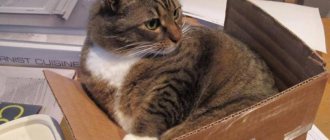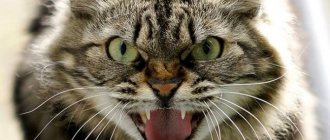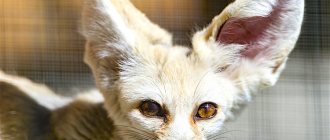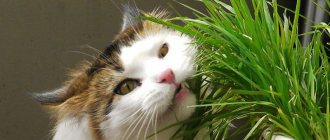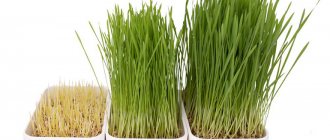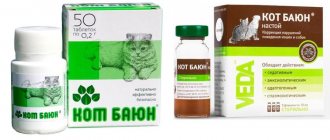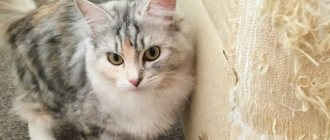Features and photos, plants
The plant has a strong aroma with lemon notes.
In natural conditions, the grass is rarely found at great height and has a tetrahedral stem. At the same time, catnip, the photo of which is presented in the article, does not grow upward, but spreads parallel to the ground. At the point where the plant comes into contact with the soil, a root is formed, and the catnip quickly spreads across the surface of the soil, forming an original living carpet. The plant has opposite foliage and funnel-shaped flowers, with lower petals shaped like an elongated lip. The inflorescences are placed in special whorl boxes. The lower petals are painted with dark dots. If the stem is broken, a pungent aroma immediately spreads due to the high concentration of essential oil. In forests, gardens, various wastelands and hills you can easily come across this unusual plant. Today there are more than 200 species of catnip. Catnip can reach a meter in height. The grass stem is usually uneven, and the flowers resemble miniature bouquets gathered together. The plant has white, pinkish flowers with brown spots, as in the photo. Inflorescences of a purple hue are less common. Some flowers are found with wavy edges and leaves that appear to be cut into a heart-shaped shape. All this luxury is complemented by the magnificent aroma of geranium, rose and lemon, harmoniously intertwined with each other.
What it is?
Catnip (or catnip) is a perennial herbaceous plant from the Lamiaceae family. The biological description of mint is presented below.
- The plant can be found throughout almost the entire territory of the European part of Russia, as well as in the Caucasus, Siberia and the Far East. This perennial is better known as a weed.
- Catnip looks like an upright plant with a pubescent woody stem, ovate leaves and dense semi-umbrella-shaped inflorescences consisting of many small white-bluish flowers.
- The root of the plant is branched and quite powerful.
- Flowering of the perennial grass begins in June and continues until the end of July.
- The aerial part of the catnip contains nepetalactone, glycosides, saponins, tannins and bitterness, as well as ascorbic acid.
- The leaves of the plant contain the most essential substances, while the stem contains very few of them.
The essential oil of catnip smells like a mixture of lemon and tart geranium, which is why this perennial is also called lemon catnip. Sometimes people confuse catnip with lemon balm - both of these herbs look similar to each other, and lemongrass also has a smell with lemony fresh notes. However, if a person can confuse these herbs visually, then cats, with their unique innate sense, are not mistaken in this matter.
Catnip attracts the attention of cats and kittens precisely because of its ethereal lemon smell, but kittens up to six weeks of age remain completely immune to the plant. In addition, scientists have found that not all representatives of the cat family react to catnip, but only 75% of them
In addition, scientists have found that not all representatives of the cat family react to catnip, but only 75% of their number.
Why do cats love catnip?
Why do cats need catnip?
Today, many cat lovers use this fragrant herb to lift the mood of their furry pet.
And watching the behavior of a cat who has sniffed mint lifts the mood and makes the owners themselves purr.
The fact is that this plant contains a special essential substance - nepetaloctone.
This aromatic component has a stimulating effect on mature cats and encourages them to behave in extremely unusual ways.
Animals suddenly begin to rub their heads on the grass, sway on the ground, tumble and meow.
To someone observing such a picture from the outside, it may seem that the cat is intoxicated.
By the way, those who cannot figure out what to name a girl kitten should observe the behavior of their pet and choose the name that suits her character most.
Some time after exposure to catnip, cats will usually go to bed to regain their lost energy.
The smell of the essential oils of this plant causes very unusual and funny behavior in cats.
All cats are very sensitive to essential oils, and especially to nepetaloctone, contained in catnip.
At the same time, catnip does not have such a strong effect on them compared to valerian.
Nepetaloctone can cause mild hallucinations in cats that inhale the substance by affecting receptors in the brain that are responsible for emotional reactions.
When catnip essential oils are inhaled, a neuroendocrine reaction occurs in the animal's body, which causes behavior similar to what occurs during estrus.
When asked whether cats need catnip, every furry pet owner has their own answer.
Some people mistakenly believe that this plant can harm a cat’s psyche, while others, on the contrary, know why catnip is needed and actively use its properties for a variety of purposes.
Your furry pet will be very happy if you plant catnip on your property.
How to use catnip
The most widespread use of catnip is in the pet products industry. Mint in dry form and in the form of liquid solutions and sprays is sold in zoological stores. Manufacturers of products for cats produce vitamins, food, treats, toys and scratching posts based on it.
Despite its strong effects on pets, catnip is not addictive, so this herb can be safely used by all cat owners.
The properties of mint help to accustom animals to scratching posts and beds. It can be used as an antidepressant for stressed animals. And a boring toy will become your favorite again if you dip it in catnip and keep it there for several hours.
We examined the catnip products that pet stores offer. We looked at their characteristics, strengths and weaknesses, and selected a list of the most popular products. We hope this information will be useful to all cat owners.
Important: buy mint without stems! Firstly, the stems do not emit any odor. Secondly, their hard structure can injure the cat’s oral cavity if it wants to chew the plant.
Catnip: harm or benefit?
Since time immemorial, people have known about the unusual reaction of cats to the smell of this unremarkable plant, for which it got its name - catnip or catnip. Its effect on the body of the purr is somewhat reminiscent of the effect of valerian, despite the fact that these are two completely different plants.
Catnip is a perennial herbaceous plant up to 1 meter high with triangular soft leaves and small white-purple flowers collected in a corolla.
How and Why Catnip Works on Cats
Not only domestic cats, but also wild cats show interest in the plant. They are attracted to catnip by the essential oil with a specific “lemon” aroma, which is due to the presence of the nepetolactone component. Special receptors are responsible for sensitivity to this substance in cats; they are transmitted at the genetic level, but not everyone has them.
Once in the nasal passages, nepetolactone binds to receptor proteins and stimulates sensory neurons that selectively affect areas of the brain, mainly the amygdala and hypothalamus, which regulate all emotional reactions of the body. Nepetolactone is chemically similar to hallucinogens, but it is not addictive and is completely harmless.
Many believe that catnip has an aphrodisiac effect, that is, it provokes sexual desire and corresponding behavior in the animal. Cats begin to rub their heads and whole bodies against surrounding objects, jump, roll on the floor and make inviting sounds. But it is worth saying that in cats with a choleric type of temperament, harmless grass can cause overexcitation of the nervous system and an attack of aggression.
The effect of catnip on a cat is short-lived, only 5-10 minutes. The animal will react to it again no earlier than half an hour later.
Interestingly, catnip also has an effect on the human brain, although not as strong. In folk medicine it is used as a mild sedative, and in cooking to add a lemon aroma to dishes.
What kind of cats usually like catnip?
As with valerian, not all cats are delighted with catnip. About 30% of purrs lack the receptor for nepetolactone. Among the rest, males and female cats aged from 1 to 4-5 years react most vividly to catnip. The older the animal gets, the less interest it has in such fun. As a rule, the plant has no effect on kittens under 6 months of age.
Why are cats given catnip?
Furry catnip lovers are given the plant as a reward after training or just to please. Sprays are convenient to use during training to a scratching post or a new sleeping place. They are often sprayed onto toys, and some already contain crushed weed inside. In addition, mint will help cats relax and unwind after suffering stress.
Catnip (Catnip) is commercially available in a variety of forms: bulbs, powders, and spray. You can get acquainted with the assortment and buy products for cat pleasure in pet stores in the city or on the Internet: https://www.zootovary.com/catnip-koshachya-myata-c-23_255_823.htm
Interestingly, mice and rats do not tolerate this grass and try to avoid places where it grows. In addition, nepetolactolactone repels mosquitoes and cockroaches, and therefore is included in some repellents.
Benefits of catnip
Catnip can be used to overcome stress in any cat, making it more determined and confident, ready for active play.
So, for example, if you brought a cat home for the first time, you can relax it and relieve tension by using catnip. Also, to encourage your pet to sharpen her claws only on the scratching post and not on your furniture, scatter some mint near the claw point post or tie a toy stuffed with catnip to it. (You can read about other ways to accustom a kitten to a scratching post in the article: “How to accustom a kitten to a scratching post.”) But, it is important to remember that if a toy stuffed with catnip is constantly available to the cat, the animal becomes immune to it. Give catnip to your cat no more than once a week. If necessary, you can always allow her an extra session of pleasure, for example after a visit to the veterinarian or after a stressful situation.
How does it affect cats?
Catnip, after inhalation, has an intoxicating effect on pets, animals begin to meow loudly, rub their faces and roll on the ground, females begin to behave as if they are in heat. Cats love this mint; most pets chew its leaves with pleasure. For humans, this herb is not dangerous due to its euphoria and does not cause hallucinations.
Cats are attracted to the strong smell of essential oils in mint. Grass has exactly the opposite effect on cats, provided that the pet eats it. After consuming mint, the animal becomes docile, calm, and sometimes apathetic, this is the effect nepetaloctone has on its body.
There is no need to be afraid of the ambiguous behavior of animals; the essential oil does not contain any narcotic substances.
The aroma of catnip, combined with the pet's receptor proteins, has a strong effect on neurons that cause short-term hallucinations. Excited reactions appear only for a while, then the cats come to their senses.
Useful properties and indications
Catnip has many positive qualities for cats, for example, catnip can rid an animal of worms and increase appetite during illness. The plant is non-addictive and is used to correct animal behavior under the following conditions:
- if the pet is excessively aggressive;
- to relieve stress before going to the veterinarian, before moving or a long journey;
- if the cat is too active and playful;
- when accustoming an animal to a tray (it is enough to place dried flowers under it to attract it).
The beneficial properties of catnip do not end there. The plant is used as a treatment and prevention of poisoning and infection with worms, as it has a bactericidal effect and can relieve muscle spasms.
Using pet mint is easy. To correct behavior, you can sew toys for cats and stuff catnip inside; you can also hang dried mint leaves and flowers from a scratching post, from a tray, or next to a place to sleep. You can add some dry leaves to the food.
Contraindications and harm
Before feeding your pet fragrant grass, you need to find out whether catnip is harmful in some cases. The properties of catnip in certain cases can harm the animal. When you should not use mint to correct behavior:
- if the pet reacts excessively emotionally to the plant;
- with a weakened nervous system and psycho-emotional disorders;
- It is better not to let pregnant cats smell the plant.
Advice
My favorite way to give catnip to my cats is to put some catnip in a sock, tie it, and give it to the cats, who start jumping, throwing the sock up, and rolling all over the floor. You can also give catnip in bulk. Just sprinkle a little on the floor or on a paper plate and watch your cat do somersaults. To extract essential oil, rub the leaves and flowers between your fingers before scattering them onto the floor. If you already have catnip in your sock, rub the sock to give the plant full effect.
How to use?
You can buy catnip at any pet store that sells products for cats. The herb is sold in dried and crushed form, packaged in bags or bottles of various shapes and volumes, as well as in the form of a spray with a spray device, sticks for chewing and cleaning teeth. It is even included in some cat toys. The smell of catnip makes the toy especially attractive to the pet, but only at first - over time, interest in it may disappear. Dry grass or essential oil included in the toy loses the brightness of its aroma over time and gradually disappears.
The spray is considered the product with the longest shelf life - it can be sprayed where necessary and at the required frequency. Dry grass or crushed powder made from it can be added to your cat's food or scattered in small quantities in certain areas of the house. A stick with catnip, intended for chewing, will help accustom your cat to the procedure of cleaning its teeth if for some reason it ignores the usual means.
Cat owners who are familiar with the effects of catnip consider it necessary to have products with this plant at home and spend considerable sums on their purchase:
- a 100 g bag of dried catnip leaves will cost 100-150 rubles;
- a 50 ml bottle of liquid spray with catnip costs 350-500 rubles;
- a small package of cat treats in the form of crispy pads containing catnip, weighing 50 g, costs 130-150 rubles;
- cat toys and chew sticks are in the price range from 150 to 250 rubles.
To save money on the family budget, experienced cat breeders grow catnip themselves. This plant can be planted in your dacha or even at home in a regular large flower pot. Catnip is unpretentious, grows well and quickly, and does not require any special care. Cat mint is not afraid of pruning and replanting and takes root well.
Lemon catnip can be used in a variety of ways.
Soap bubbles with mint. The product contains catnip essential oil extract. This product is intended for active games with your pet. The cat reacts not only to the iridescent bubbles floating in the air, but also catches the tart lemony smell of mint, which additionally encourages the animal to play.
Sprays and dried catnip leaves can be used as desired. If you lightly spray the spray near the cat's litter box, the cat will show interest in this design, which means it will be much easier to train her to use this litter box for its intended purpose.
Sometimes animals don’t want to stay asleep in their place and, meowing pitifully, ask to go to bed with people. This cannot be allowed, because it will become impossible to eradicate this habit later. You can accustom the animal to its place by spraying it with catnip spray or sprinkling a small amount of crushed dried leaves of this plant. The pet will be happy to stay on its bed and over time will begin to do this even without the use of catnip.
When buying a dried plant, you need to know that only the leaves of catnip emit the smell, and the stems do not have such an aroma
For this reason, when buying dried catnip, you should pay attention to the quality of the raw material - it should not contain crushed dry stems. Otherwise, the effectiveness of such a remedy will be low.
Read on to learn more about how catnip affects cats.
How to use catnip
Some owners believe that catnip has a negative effect on the pet's nervous system. This is a misconception. On the contrary, using catnip will help get rid of many problems, incl. psychological. Catnip can be used in situations where:
- the pet has an aggressive character - just give him a little dried catnip.
- the cat is very playful and is capable of turning everything upside down in the house, the plant will have a calming effect on him;
- It is necessary to accustom the animal to the tray - you should put a little dry catnip under the container. The smell will attract the cat's attention, and the learning process will be faster and easier;
- the owner is going on a trip with his pet, or is planning a trip to the veterinary clinic - we recommend putting catnip in a few branches, this will help relieve stress in the animal;
- the cat has recently arrived in the house and needs to get used to its new housing, it is recommended to place branches of the plant in the area of its sleeping place;
- the animal is passive and lethargic - a little catnip placed in toys will cheer it up;
- your pet has a stomach spasm - the bactericidal properties of catnip will help solve the problem;
- the animal refuses to eat - catnip will increase appetite;
- the cat sharpens its claws on the furniture and ignores the scratching post - you should carefully open the covering of the scratching post, place plant branches inside it and sew it up. The animal will smell the mint and leave the furniture alone. This is one of the most effective.
Attention!
Catnip is indicated for cats infected with helminthic infestation. The plant prevents the proliferation of helminths.
Catnip can be used both fresh and dried. When stored, the plant retains all its properties.
Benefits of using mint for cats
We can say that this cat plant is like a behavior correction for some cats. For example, in very aggressive pets, after eating catnip, their behavior becomes docile and calm, while slow and lethargic cats can become active and playful. After consumption, this plant has a bactericidal effect, that is, it relieves stomach spasms.
Veterinarians confirm that mint is a good cure for stressful situations for cats. They calmly endure travel and various trips to the veterinary clinic. Also, this herb does not act as a strong drug; the cat will not get used to it if you control your pet and do not let it near the plant often.
After catnip became popular among cats, many experts began to produce special toys for cats with the smell of mint. And some owners independently sewed an artificial mouse from rags, placing dried cat grass inside. They also produced drops that drip onto a device for cats where they scratch their claws. Thus, cats do not spoil good furniture, but get used to the fragrant scratching post.
If your cat has no appetite, you can add some dried or fresh cat mint leaves to the food.
It is important to note that catnip is considered an anthelmintic. If this medicinal herb is not available in nature, you can plant it in a pot and place it on a windowsill where the sun's rays constantly fall
Watering frequently is not recommended; the soil should not be acidic. To prevent your cat from eating all the grass at once, after it ripens, you should pick it off, chop it up and dry it. Must be stored out of reach of cats.
If this healing herb is not available in nature, you can plant it in a pot and place it on a windowsill where the sun's rays constantly fall. Watering frequently is not recommended; the soil should not be acidic. To prevent your cat from eating all the grass at once, after it ripens, you should pick it off, chop it up and dry it. It must be stored out of the reach of cats.
In addition to the fact that cats love this grass, it is also rich in nectar, so bees are also partial to it. It is also added to vermouth, shampoo, and perfume. Some people use mint herb as a spice in confectionery, soap making, and cosmetic purposes. It turns out that the plant treats many diseases: it improves the gastrointestinal tract, soothes migraines, and eliminates cough. It also improves blood circulation, can cleanse the lungs, and overcome insomnia. And this catnip can also help get rid of mosquitoes.
Benefits of Eating Catnip
If you notice that your cat has no appetite, she has become lethargic, and her fur is no longer shiny, she probably has worms. Try giving her a few catnip leaves mixed into her food. This can also be done for phytoprophylaxis against worms, since some types of parasites cannot tolerate catnip.
Why do cats like mint so much? Clearly, its aroma awakens euphoria in cats, relaxes them and relieves stress. And if you are planning to move or travel with your pet, then many veterinarians even suggest giving the animal some pre-scented toy or a bag of dried catnip so that the cat does not get nervous and can rest.
Do cats like mint? Yes, most people rather love it. There is a small percentage of animals - catnip does not make such a strong impression on them. And, in order to have fun or get excited, they would rather prefer to play with their owner, with other cats, or would be happy to hunt mice or birds. Animals, like people, are all different.
Descriptions and photos of the plant - catnip
Catnip is an herbaceous perennial plant from the mint family that grows from 90 cm to 1.4 m in height. It has straight, green, square-shaped stems with brown-green foliage. The leaves have curly edges (triangular to ovate), with gray-white hairs on the underside. The fragrant flowers are small, white with spots of pale pink or purple, and bloom from late spring to mid-autumn.
What do you know about grass for cats?
There are about 250 species of plants in the Lamiaceae family, known collectively as catnips. Most of them are perennial plants that grow in height from 30 cm to 1 m. The catnip family grows in Europe, Africa and South-West Central Asia, in Russia it is distributed throughout almost the entire European part, in the North Caucasus, in the south of Western Siberia and the Far East, and was also naturalized in North America. Some are grown as ornamental plants that attract birds, bees and butterflies.
Most people associate catnip with its effects on cat behavior. However, if the plants in your garden are not damaged, cats will most likely not be interested in them. But some cats will roll around near the plant, meow, and even eat the plant, after which they fall into a relaxed, sleepy state. The thing is that big cats, such as lions, have inherited a specific gene - nepetalactone, which leads to such a sensitivity to the aroma of catnip. Cats that are younger than six months old and cats that have not carried this gene since birth do not have any reaction to catnip.
How does it affect cats, why do animals love it?
Harmful or not?
Many people think about how grass affects cats, whether it is possible to give their pet such a treat and whether it will end in tears. Is grass harmful to cats? Catnip is absolutely safe, and in some cases, even beneficial. The plant is not addictive. Let's consider the range of beneficial effects of the plant on cats:
- when used internally, it will get rid of worms;
- helps with spasms;
- reduces aggressiveness;
- calms down when going to the veterinarian;
- helps when training a cat to use a litter box (you need to put some dry grass under the pot).
Why else do cats need this weed? It’s very easy to control your pet’s mood with mint; you can sew a little mint into your favorite toy and take it out as needed. Although in most cases the grass is harmless, there are exceptions:
- If your pet behaves aggressively under the influence of mint, then you should limit it from this plant. Such bursts negatively affect the pet’s nervous system.
- It is also prohibited to give mint to pregnant or lactating cats. In pregnant cats, emotional outbursts can negatively affect the pregnancy of kittens.
Can it be given to kittens?
The essential oil that catnip contains is similar to the aroma of the pheromones that the cat family secretes during mating. Mint will affect the animal only after puberty.
Attention! When a kitten meets this plant, there will be no effect and no negative impact either.
How to use for pets?
There are many ways, and you can use both dried herb and various catnip-based products.
How to use:
- You can add mint to your food, and there are also edible bags of dry herb.
- Toys with grass sewn inside, drops and infusions with mint extract.
- Sprays are very popular in use, in this case you choose where to spray it, and it is very convenient to store it.
Effect of smell
Why do cats love this weed so much that they go crazy from its smell? The reaction of cats is explained by the fact that catnip gives them a feeling of excitement or a relaxing effect. When cats hear the smell of catnip, say in a certain place, they can purr, purr, and rub their whole bodies against the thing with a wonderful aroma. You can immediately determine whether the cat likes the smell or not.
What happens if you let a cat smell a plant? If you like the smell, you will be able to observe how the cat slightly opens and protrudes its mouth and releases a small amount of saliva. The cat will try to lick and chew the source of the smell.
Each cat may react differently. Some cats become more playful, cheerful and run around the apartment. Others, on the contrary, become lethargic, calm and more affectionate, even if they themselves have a complex character.
Attention!
Important ! Mint acts on cats for 10-15 minutes, after which cats develop a kind of immunity to the aroma of the plant. They will be able to experience such “joy” again only after 1-1.5 hours
Why is there no reaction?
Yes, about 30% of cats are immune to this magical herb. Why doesn't my cat react to the smell? The reasons may be different:
- it only affects those animals that have already reached puberty, therefore, it does not affect kittens;
- no effect on spayed and neutered animals;
- the effect decreases in older animals;
- Some animals lack the gene that is responsible for the perception of this smell.
Application area
People have many questions: is catnip healthy, what is it for, where and how to use it. Veterinarians often use catnip to calm pets. This is a natural remedy that allows you to correct the animal's behavior pattern. Unlike synthetic sedatives, it does not have a negative effect on your pet and does not cause side effects.
The plant has the following benefits for cats:
- for colds and stomach pain, essential oils and phytoncides have an antibacterial effect and relieve spasms;
- increases appetite, preventing exhaustion of the animal’s body during illness;
- helps you cope more easily with stress when moving, renovating or buying a new pet;
- Suitable as an antiparasitic agent as an additional therapy when taking a course of anthelmintic drugs.
The main advantage of a natural remedy is the lack of addiction in your pet. Despite the acute reaction of the nervous system, the period of excitation does not last long and passes without leaving a trace on the general condition of the animal.
Cat owners should store any mint-based products in an airtight container. Essential oils quickly evaporate, and the medicine loses its therapeutic effect.
Manufacturers of pharmaceutical companies that are focused on the production of veterinary drugs became interested in the unusual reaction of pets to mint. They have created a line of medicines with catnip essential oils, essences or liquid extracts. Veterinarians do not recommend giving dried parts of the plant and products with catnip more than once a week.
Concentrated solutions are used in the following cases:
- Control of aggressive behavior. An irritated pet should be given a plant leaf or a piece of cloth soaked in the extract. Nepetalactone contained in the oil has a sedative effect on the nervous system, which allows you to control the animal’s behavior.
- For cats with increased physical activity. If you give your cat a cloth or paper soaked in oil, he will calm down and stop running around the apartment, destroying fragile objects and scratching upholstered furniture. This technique helps in training kittens, which become calmer and more controlled as they grow older.
- Buying an adult animal. It is difficult to train cats and kittens over 1 year old to use a litter box. Therefore, owners often resort to using catnip. From 5 to 10 drops of liquid extract mixed with sand for the tray, a conditioned reflex is developed in the animal. Thanks to this, the cat will go to the litter box. A similar principle is used to accustom a pet to a new bed.
- If a cat uses upholstered furniture to sharpen its claws, special scratching posts are sprayed with catnip essence.
- You can fill soft toys or a ball with cotton wool soaked in the medicine. Thanks to this effect, the cat will not get bored in the absence of the owner and tear up the furniture. The cotton wool will need to be changed every month because the oils evaporate quickly. Ready-made toys with catnip are sold in pet stores.
We recommend that you read the Summary of the use of sage leaves
This plant helps not only animals, but also people. Nepetalactone has the same therapeutic effect as valerian root. When using products based on catnip, the functioning of the central nervous system improves:
- the reaction speed increases;
- memory improves;
- people become less irritable;
- cognitive functions increase;
- a person can more easily focus on the task at hand;
- the psycho-emotional state is normalized, resistance to stress increases.
In folk medicine, catnip is used to treat colds, migraines, and digestive problems. Women are advised to use horehound decoctions for painful menstruation. When used externally in the joint area, mint medicines help relieve inflammation and improve tissue microcirculation.
Bags of crushed and dried leaves of the plant can be hung around the apartment. Essential oils repel insects and small rodents, so there will be no pests in the house.
Catnip - what is it?
This plant has an official name - catnip. What is catnip? This is a perennial herb of the Lamiaceae family. Cats are attracted to it thanks to its lemon-scented essential oil, which contains a special substance - nepetalactone. Inhaling the aroma, cats and even lions and panthers experience ecstasy. And all thanks to the gene that programmed such a reaction in the cat’s body.
What catnip looks like: photo and description. The plant has a purple flower and green leaves.
Although the main use of this plant is not related to the pet industry. It is a spice that is added to food and also to perfumes. Catnip also has healing properties: it is used for inflammatory diseases of the respiratory tract, anemia, migraines, poor appetite, depression, and is used against worms and infections. Some people manage to take it as a hallucinogen. And in ancient times, catnip was added to love potions, attributing magical properties to it. Although this opinion is based, rather, on the fact that the plant acts as a pheromone.
This is interesting: When a kitten begins to open its eyes after its birth: we explain point by point
Eating catnip - benefits and harms
It is well known that many indoor plants are poisonous and extremely dangerous for our pets: azalea, begonia, asparagus, dracaena, geranium, poinsettia, dieffenbachia, etc. Therefore, reasonable doubts arise: is it worth giving your pet catnip or is it better to get by with the usual oats in a pot.
Veterinarians confirm that catnip is harmless to your pet’s health (unless, of course, you feed the animals large quantities of its extract or essential oil) and is not addictive. Moreover, it is sometimes recommended for easily excitable animals before travel, a visit to the clinic, or an important event. For example, catnip extract, among other phytocomponents, is part of the most famous natural sedative for animals - Kota Bayun.
Kot Bayun - sedative (calming) herbal medicine for animals
Eating catnip can be harmful if the cat reacts strongly to it and becomes aggressive: some particularly violent animals may growl, hiss, hit with their paws, throw off or drop the plant pot on the floor or on themselves. This must be taken into account before introducing a cat to a new, exciting smell. Active use is not recommended for a pregnant female, as an emotional outburst can negatively affect health. But as a rule, the short duration of the effect negates most of the side effects.
How to give catnip?
Some owners are wary or negative about lemon catnip, considering it dangerous for animals. Scientists refute all fears: consuming mint has no side effects or harmful effects. An overdose of a natural remedy is impossible: animals intuitively determine the dose and, if it is exceeded, immediately stop consuming the plant.
There are four ways to give your pet healthy mint:
- Buy catnip toys. They are presented in an assortment of pet stores.
- Buy a plant at a pharmacy or collect it in the forest, chop it, dry it and give it to your pet from time to time.
- Plant the herb in a pot and grow it in your apartment. The cat will consume mint as needed.
- Buy supplements with mint, vitamins based on it, a special spray or drops at the pet store.
Growing lemon catnip at home is easy. Plant it in sandy soil and place it on a windowsill so that the mint gets enough sunlight. You can give your pet leaves of a one-year-old plant.
How to use catnip
Horehound is used for both humans and cats. It is mainly used as a medicinal plant, but plays a significant role in landscape designs and cooking. And yet, it is no coincidence that catnip received its name - its special properties allow the plant to be widely used in various forms in order to regulate many aspects of pet behavior.
In addition, catnip essential oils have found their use in cosmetic and perfume production: in their pure form they are included in complex formulas of perfumes and eau de toilette, and as perfumed fragrances they are used for flavoring, soap, shower gels, shampoos, toothpaste, etc. d.
Where budra grows there are never flies and mosquitoes
Interestingly, “smart” grass has a selective effect on insects: it attracts beneficial ones and repels harmful ones. Budra is an excellent honey plant. If it grows in your garden plot, then there will always be a lot of bees. But mosquitoes, flies and even many garden pests will disappear without a trace.
For pets
Most often, budra is used to concentrate the cat’s attention and attract it to some objects or actions: for example, to a scratching post, a sleeping place or a tray. Catnip can normalize the psychological state and behavior of your pet.
An overly excited animal is calmed by the aroma of catnip, while a lethargic and depressed animal is cheered up.
Catnip-scented scratching post is very attractive to cats
It is very convenient to use catnip sprays, which are sold in pet stores. A couple of sprays are enough for a new scratching post - and your cat’s interest in it is guaranteed. Knowing these properties of catnip, manufacturers place several of its dried leaves into toys. These toys are sure to become your pet's favorite.
A toy with catnip leaves hidden inside will become your pet’s favorite.
Cats not only enjoy the aroma of budra, but also
They eat it in small quantities for treatment: improving digestion and getting rid of worms. The bitterness contained in the plant improves the peristalsis of a sluggish intestine, and ursolic acid stimulates the “production” of enzymes and relieves inflammatory processes in the gastrointestinal tract, at the same time improving the animal’s appetite.
In landscape design
Flower growers actively use decorative varieties of catnip in landscape design to decorate garden plots and parks. The plant looks especially impressive in spacious areas and framed by artificial reservoirs.
Breeders have developed many cultivated varieties of fragrant horehound, which differ from wild ones in their rather large inflorescences and a wide variety of colors.
Decorative varieties of catnip have larger and brighter flowers than wild varieties.
It is very important to remove dry, already faded “panicles” in time so that the plant has fresh flower shoots. Thanks to this, the flowering of the catnip will become longer and more abundant. Some gardeners practice a more radical approach - in mid-July, areas overgrown with bud are mowed and generous regular watering is provided.
The moisture-loving plant quickly recovers, and within a month the catnip bushes will delight the eye with lush greenery and beautiful inflorescences.
Catnip looks impressive on the shore of a pond
In cooking
Experienced chefs enjoy using the fragrant plant. Dried and powdered budra is included in spice mixtures for flavoring various dishes:
- soups;
- salads;
- marinade for herring;
- baked meat;
- savory cheeses;
- sauces;
- baking;
- desserts;
- cocktails.
Dried catnip retains both aroma and benefits well
For culinary and other purposes, dried catnip is often used, which retains most of its aroma and beneficial qualities. Catnip is harvested for drying from July to August, until mass ripening of the seeds begins. The collected grass is dried in a well-ventilated place, protected from direct sunlight. Finished raw materials are stored for no longer than two years in tightly closed glass or ceramic containers.
In folk medicine
Since ancient times, people have used catnip as a medicinal plant to cure various ailments:
Ursolic acid, which is part of catnip, has the ability to normalize salt metabolism, increase the elasticity of capillaries and activate the work of enzymes. Interestingly, this valuable substance does not lose its beneficial qualities even with prolonged heating.
Make yourself tea with catnip - you will forget about insomnia
A cup of delicious tea with a couple of budra leaves, drunk before bed, will relieve you of insomnia and night cramps.

